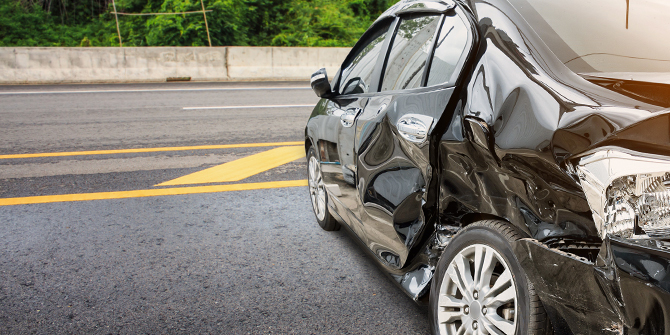
The time it takes to position your rearview mirror is about the same amount of time it takes for your new car to start losing its value. Your vehicle starts to depreciate so quickly that if it’s involved in an accident or stolen before you’ve paid off the loan, you may owe more than the auto is worth. That’s where Guaranteed Asset Protection (GAP) can help.
What is GAP “insurance” and what does it cover?
GAP coverage — commonly known as GAP insurance — is an optional, add-on policy that can help you cover the gap between the value of your car and what you owe on your New Auto Loan or Used Auto Loan in the event of a loss. This type of policy is not mandatory in North Carolina, but when selected by vehicle buyers it can be added to the purchase of new and used cars and trucks.
Why you may need GAP insurance coverage
GAP insurance can protect against total loss if you’re still making payments on your vehicle, since the comprehensive section of your standard auto policy only pays what your car is worth at the time of loss. According to the Insurance Information Institute, you could also benefit from GAP coverage if you bought a car that depreciates faster than average autos, like a luxury car, or if you rolled over a car loan where you were upside down on the payments.
Is GAP insurance worth the money?
Say you finance a new car for $30,000. Later, your vehicle is totaled in an accident. At the time of the wreck, if the book value of your car is $25,000, your insurance company will only pay the current value of the auto — $25,000. You’re responsible for the $5,000 remaining on the loan. GAP could help you pay off that remaining $5,000.
Where to buy GAP insurance and how much does it cost?
A car dealer, finance agency, auto insurer or your Credit Union are just a few places to get GAP coverage. Policy requirements may differ from business to business, so total costs vary. However, this type of protection generally doesn’t add much to your lease or finance payment, nor to your auto insurance payment, depending on where you buy your policy. Even a few dollars more could bust your budget. Use a GAP insurance cost calculator to determine if you can afford the extra coverage when you’re calculating a car payment.
Be sure to get quotes before deciding which company to purchase coverage from, if you want the added protection. A GAP policy from an auto insurer may cost less than buying it from the dealership or lender when it’s included with your collision and comprehensive coverage. Your auto insurer may add the costs directly into your monthly policy payment.
If you found a third party that only sells GAP insurance, you’ll need to pay them directly. When you first finance or refinance a vehicle with LGFCU, you can add GAP coverage for a one-time, low flat fee compared to the average cost at a dealership.
GAP could offer the added peace of mind, knowing you’re covered just in case something happens.
The advice provided is for informational purposes only.